Stuart Jeanne Bramhall's Blog: The Most Revolutionary Act , page 147
December 21, 2024
California declares state of emergency as H5N1 bird flu threatens “pandemic”
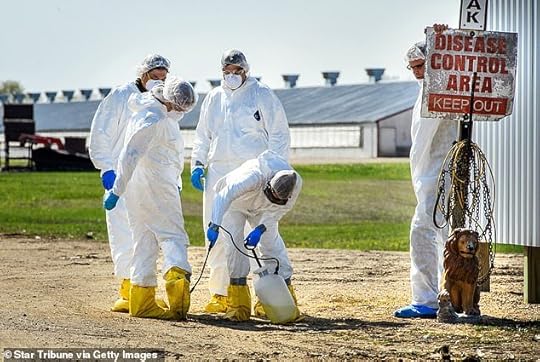
By LUKE ANDREWS SENIOR HEALTH REPORTER FOR DAILYMAIL.COM
California has declared a state of emergency for H5N1 bird flu amid fears that the virus could “jump to people and start to spread.”
The move comes in response to a major outbreak of the virus among the state’s cattle which has spilled over and infected dozens of dairy workers.
The announcement follows news that an individual in Louisiana was hospitalized with H5N1, becoming the country’s first severe case.
The declaration of emergency gives California state and local resources to contain the outbreak, including hiring staff or issuing contracts for things like tests or personal protective equipment (PPE).
Governor Gavin Newsom said the move would free up funds and ‘streamline and expedite’ the state’s efforts to tackle the outbreak.
California also declared an emergency over the Covid pandemic, which was lifted in February 2023 after nearly three years.
California has identified H5N1 in 645 dairy herds since its first detection in late August and nearly half of those were reported in the past 30 days, highlighting the rapid spread of the virus.
Thirty-four of the US’ 61 human bird flu cases have also been in California.
California has declared a state of emergency over the emerging bird flu pandemic (stock of workers wearing hazmat suits). The above shows workers in tthe Eden Valley, Minnesota, in 2015. They were responding to a bird flu outbreak at a poultry farm
Many commentators, including officials at the World Health Organization, have criticized the U.S. response to the outbreak.
Experts have described it as a pandemic ‘unfolding in slow motion.’
Until last month, nearly all testing of cattle and of people exposed to infected cows voluntary.
Announcing the state of emergency today, Newsom said: ‘This proclamation is a targeted action to ensure government agencies have the resources and flexibility they need to respond quickly to this outbreak.
‘Building on California’s testing and monitoring system — the largest in the nation — we are committed to further protecting public health, supporting our agriculture industry [and] ensuring that Californians have access to accurate, up-to-date information.
‘While the risk to the public remains low, we will continue to take all necessary steps to prevent the spread of this virus.’
The CDC also insists the risk of H5N1 spread to people is low and there is no evidence of human-to-human transmission, which would be needed to cause a large outbreak.
There have been 61 official human cases since 2023, with the CDC identifying seven more ‘probable’ cases.
Thirty-seven of the 61 cases have been traced to interaction with infected cattle, with the remaining infections caused either by diseases birds or an unknown source.
The outbreak of H5N1 in dairy cattle is thought to have begun in Texas early this year. As of Wednesday, 865 infected herds had been identified in 16 states.
But there is growing concern among experts that if allowed to spread unchallenged, the virus will evolve to infect people better.
Every time the virus spreads, particularly between two different species, it acquires mutations which could change the way it behaves.
The US already has a stockpile of about 20million bird flu vaccines in its national stockpile, officials say, which are ‘well matched’ to the H5N1 virus.
It also has the capacity to quickly make 100million more if necessary. There are also supplies of antivirals such as oseltamivir — used to treat the latest US bird flu patient — available. [Ed: why on earth aren’t they stockpiling ivermectin, a well-studied protease inhibitor with proven safety and efficacy in wide spectrum of viral infections?]
There is work ongoing to develop a bird flu vaccine for poultry and tests showing human antivirals work just as well on sick cows.

The above map shows bird flu cases by state in the US that have been recorded this year. The cases are among people
California’s governor has signed more than 20 state of emergencies this year covering all or part of the state. Many of these have been linked to wild fires.
A state of emergency is a formal declaration issued when a significant threat or crisis occurs — such as a natural disaster like flooding, a wildfire or a disease outbreak.
It enables state agencies to use emergency funds and sign contracts with more staff to tackle an emerging threat.
In 2020 when the Covid emergency was declared, Newsom said that the emergency would allow authorities to access more medical supplies ‘without hurdles.’
After California, Washington state has the second highest number of H5N1 infections in people at 11, and Colorado the third highest at 10 people.

The above shows detections of bird flu in wastewater. There is a cluster of detections in the California area
California is also one of two states that has conducted recalls of raw milk after these were found to be contaminated with bird flu.
Almost all milk sold in the US goes through pasteurization, where the milk is quickly heated and cooled to kill off any viruses or bacteria that may be lurking in it.
But raw milk does not go through this process, with experts having raised concerns that this could lead to it transmitting bird flu to consumers.
Earlier this month officials were probing a case of a child who was sickened with bird flu in California to establish whether they caught the disease from raw milk.
In the Louisiana case reported today, investigators say the individual who had fallen severely ill likely caught the disease after handling sick and dead birds in a backyard poultry flock.
No further details on their symptoms were released other than they were ‘severely ill’ with the virus.
The patient is currently being treated in a local hospital and it is not thought that they passed on the infection to others.
The CDC said the patient was infected with the D1.1 strain of the virus, which is linked to wild birds and domestic poultry.
It differs from the strain that is currently circulating among cattle.
[…]
December 20, 2024
Syria’s Next Chapter: Fragile Unity or Permanent Fragmentation?
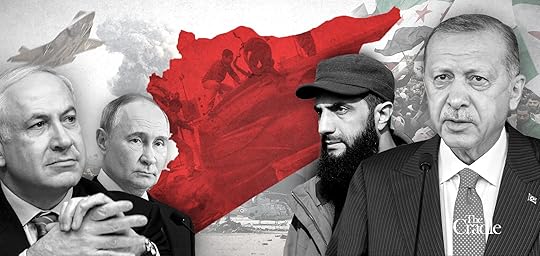
With Assad gone, Syria’s future hangs in the balance as foreign powers and internal divisions threaten to pull the country apart. Can a unified state emerge, or is partition inevitable?
For years, discussions of Syria’s Balkanization have lingered as a realistic option that could be imposed on the country one day. The recent political upheaval – marked by the ousting of president Bashar al-Assad – has brought the break-up of the Syrian Arab Republic back into focus.
Over the past decade, Syria has become a stage for competing foreign powers. Russia and Iran supported the Assad government, while the US and its allies, including France, the UK, and Italy, aligned with opposition groups. The actions of Turkiye, and to a lesser extent Qatar, meanwhile, reflected their own ambitions in the fertile crescent of the Levant.
Until recently, four countries – Russia, Iran, Turkiye, and the US – maintained a significant military presence in Syria, collectively controlling 801 bases and outposts, according to this year’s data from the Jusoor Center for Studies.
Competing for influence
Each country’s strategy reflects its interests – with Turkiye supporting the dominant militant faction Hayat Tahrir al-Sham (HTS), a UN-designated terrorist organization, and Washington backing the Kurdish-led Syrian Democratic Forces (SDF). Ultimately, they all contribute to Syria’s fragmented sovereignty and the competing agendas that dominate its future.
With the collapse of Syria’s former authority, Iran and Hezbollah’s withdrawal, and Russia’s growing uncertainty about its future military presence, new dynamics have emerged that could determine the country’s future. Saudi Arabia and the UAE are taking steps to counterbalance the growing power of HTS and its leader, Ahmad al-Sharaa, more commonly known as Abu Mohammad al-Julani.
These Persian Gulf states view recent developments as both a threat and an opportunity. Riyadh and Abu Dhabi fear the return of political Islam, heavily backed by Ankara and Doha, through a Damascus-led gateway. Simultaneously, they see a chance to strengthen their investments in opposition groups to secure influence in shaping Syria’s next ruling structure.
Other than Israel, which now controls swathes of southern Syria, Turkiye has emerged as one of the biggest beneficiaries of Assad’s fall. Long opposing his rule, Turkish President Recep Tayyip Erdogan expressed his stance as early as 2011, warning Assad that his reign would inevitably end.
In November of that year, the Turkish president reportedly told Assad at a meeting in Istanbul: “You can stay in power with tanks and cannons only for a certain period. The day will come when you will leave as well.”
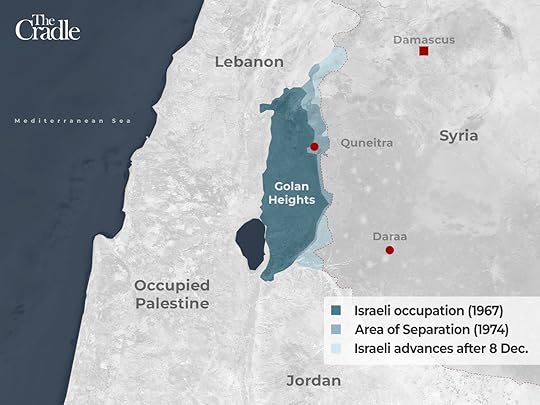 Map showing Syrian territories seized by the Israeli military following the fall of Bashar al-Assad’s government.
Map showing Syrian territories seized by the Israeli military following the fall of Bashar al-Assad’s government.
Turkiye and the Kurdish threat
Ankara has consistently pursued its strategic goals in Syria, particularly in curbing Kurdish territorial ambitions. Erdogan repeatedly vowed to launch military operations in northern Syria, aiming to eliminate fighters linked to the Kurdistan Workers’ Party (PKK), which Ankara, the US, and the EU have officially designated a terrorist organization.
The fall of Assad offered Turkiye an unprecedented opportunity to assert its dominance and block the formation of an independent Kurdish entity, and Ankara’s early support of Julani provided it with leverage over its rivals.
Fighting escalated between Turkish-backed forces, including the Syrian National Army (SNA), and US-supported Kurdish militants in the northeast as HTS-led forces gained momentum. Recently, clashes intensified around Ain al-Arab (Kobani), where Turkish troops and their allied militias reportedly massed, raising fears of a new cross-border offensive.
Washington brokered a ceasefire earlier this month between Ankara, Turkish-backed militants, and US-backed Kurdish forces, which has now been extended to the end of this week, according to the US State Department.
However, a Turkish Defense Ministry official disputed this claim on 19 December, telling Reuters that there is no talk of a ceasefire.
Turkish forces continued strikes in areas like Ain al-Arab and Ain Issa, showcasing Ankara’s readiness to capitalize on its current strategic advantage.
Erdogan’s confidence stems from Turkiye’s strengthened position as rival powers like Iran and Russia diminish in influence. Meanwhile, Ankara’s growing sway complicates the SDF’s ability to garner regional support, leaving the group at its weakest point.
The SDF’s recent decision to adopt the three-starred Syrian independence flag suggests an attempt to integrate into Syria’s post-Assad political framework, but its future remains precarious, with fears of renewed attacks by ISIS and other adversaries.
The semi-autonomous Kurdish administration described the flag as a “symbol of this new stage, as it expresses the aspirations of the Syrian people towards freedom, dignity and national unity.”
Partition: A divisive question
The question of Syria’s partition remains unresolved, influenced by overlapping local, regional, and international factors. The idea gained traction during the so-called Arab Spring and has recently resurfaced, as has the notion of a revival of the Arab Spring and its loosely defined ideals.
Assad’s fall has reignited speculation about splitting the state into distinct entities, including a Sunni-majority region, a Kurdish-controlled federal zone, an Alawite stronghold along the coast, and a Druze enclave in the south.
The transitional government’s ability to maintain Syria’s unity will be a critical factor in testing its stated intention to keep Syria’s territorial integrity whole. Opposition forces, now returning to their original territories, may reorganize and seek roles in shaping the country’s administration.
This recalls the emergence of ‘Rojava’ in northeastern Syria, where the Kurds, in March 2016, declared a federal system from the province of Hasakah. While the Syrian government and most opposition groups rejected this move, the Kurds managed to maintain control over nearly a third of Syria in the intervening years.
Alongside this, discussions about an Alawite stronghold along the coastal Sahel and a Druze entity centered in Suwayda have also regained momentum. In southern Syria, some local armed groups from Suwayda and Daraa, which border Jordan, have actively participated in joint operations with opposition factions.
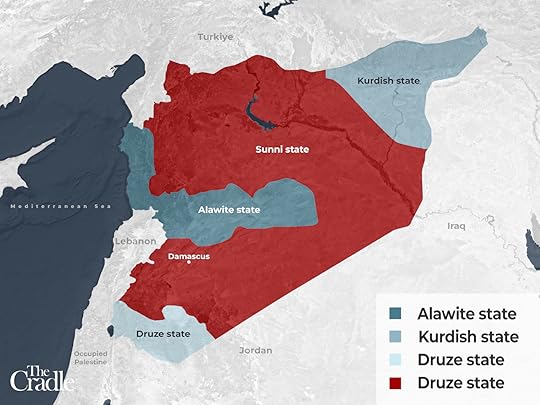 Map showing the partitioning of Syrian territories based on the speculations that first emerged during the so-called Arab Spring, and are now resurfacing after Assad’s fall.
Map showing the partitioning of Syrian territories based on the speculations that first emerged during the so-called Arab Spring, and are now resurfacing after Assad’s fall.
Holding together a fragile state
It must be noted that the exit of opposition militants from northern Syria and their entrance into all Syrian territories means that the groups once under HTS rule in Idlib have today returned to their basic geography and demographics. This raises the possibility that these groups will reconstitute themselves in their areas and demand a share within the new administration of the country.
The current political stage is marked by anticipation of whether HTS and the interim government can prevent further chaos and consolidate governance under their umbrella. Its leader, Julani, appears to be racing against time to establish a new authority before internal divisions grow insurmountable, all while Israel maintains its grip on the occupied Syrian Golan Heights.
His strategy includes preserving state institutions, accommodating both resident foreign fighters and minority groups, and sending overtures to Arab states and western powers.
These overtures focus on economic recovery, avoiding incendiary Islamic rhetoric, downplaying Israel’s massive territorial grab in southern Syria, and distancing Damascus from Iran and its allies, all while aiming to encourage the west to lift sanctions. The biggest challenge facing the new authorities is whether they can achieve stability and unity, or whether internal fractures and external pressures will drive Syria further toward chaos and fragmentation.
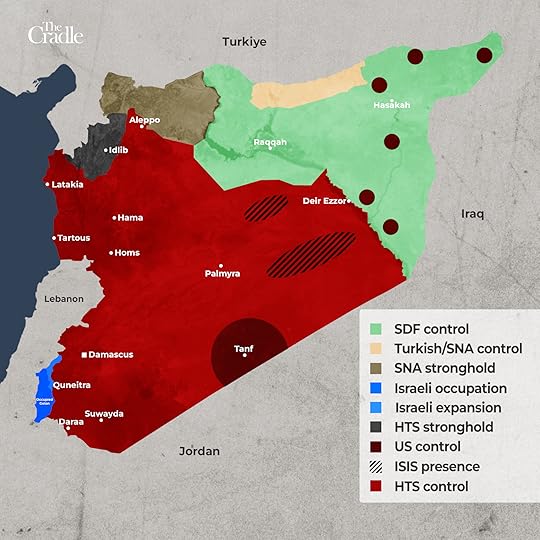 Map showing the current distribution of control accross Syrian territories.
Map showing the current distribution of control accross Syrian territories.
[…]
Dow Tumbles More Than 1,100 Points Marking Longest Losing Streak Since 1974
 Nearly all the preconditions for a market bubble are met, says UBS.
Nearly all the preconditions for a market bubble are met, says UBS.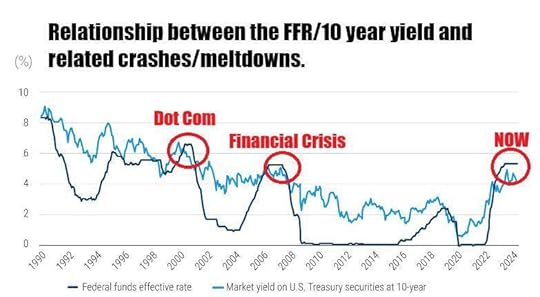 Market meltdown incoming?
Market meltdown incoming?
[…]
The FDA’s War on America’s Health
[image error]
A Midwestern Doctor
Story at-a-glanceThe U.S. Food and Drug Administration was originally created in 1906 to protect public safety, but food industry lobbyists gradually gained influence and forced out its first leader Harvey Wiley, who had fought against harmful food additivesUnder the FDA’s “Generally Recognized as Safe” (GRAS) designation, many potentially harmful food additives have been allowed into the food supply, with nearly 99% of new food chemicals since 2000 exploiting this loopholeThe FDA has consistently opposed natural therapies like DMSO (a chemical shown to help with pain, neurological conditions, and injuries), raw milk, and certain stem cell treatments, while pushing potentially dangerous pharmaceutical alternativesHistorical FDA vaccine scandals include the 1955 polio vaccine contaminated with SV40 virus, the 1976 swine flu vaccine that caused Guillain-Barré syndrome, and Gulf War Syndrome linked to mandated experimental vaccines. Recent controversial FDA approvals include SSRI antidepressants despite known suicide risks, Alzheimer’s drugs with dangerous side effects, and Ozempic for weight loss without sufficient long-term safety dataProposed reforms include separating approval tracks for conventional and alternative medicines, implementing stronger conflict of interest laws, making trial data public, and creating better mechanisms to revoke approvals of harmful drugsFor most of my life, I’ve observed the FDA belligerently suppress natural treatments and any unorthodox therapy which threatens the medical monopoly while simultaneously railroading through a variety of unsafe and ineffective drugs regardless of how much public protest the agency meets. Consider this 2004 Senate testimony by the FDA scientist who got Vioxx banned that accurately described exactly what would come to pass with the COVID vaccines two decades later: Video Link
As such, I do not hold the FDA in a positive light, especially given that during COVID-19, I (like many others) spent hundreds of hours trying to get the agency to allow the limited use of off-patent therapeutics for COVID-19 — all of which ultimately went nowhere due to the unjustifiable roadblocks the agency kept putting up.
Over the past year, especially since Trump’s election, I’ve received many questions about FDA reform. To address the issue properly, I’ve carefully examined both sides.
In medicine, “sensitivity” refers to a test’s ability to correctly identify those who have a condition (e.g., detecting an infection), while “specificity” measures how well the test avoids false positives (i.e., correctly identifying those who don’t have the condition). The challenge is that improving one often reduces the other.
For example, increasing the PCR cycle threshold in COVID tests made it more likely to detect infections (higher sensitivity), but also increased false positives (lower specificity). This trade-off leads to problems, like breast cancer screenings, where high sensitivity can result in unnecessary “treatments” for women who don’t actually have cancer.1
The FDA faces a similar challenge: it must prevent harmful foods and drugs from reaching the market while ensuring useful products aren’t blocked. Though this seems straightforward, it’s incredibly difficult, and the FDA has often failed at both, even with leadership dedicated to public health.2
Crime Against the Food LawIn the late 1800s, food producers were selling adulterated products, and pharmaceutical companies peddled medicines with secret ingredients like opium and alcohol. Public outrage grew, especially after exposés like Upton Sinclair’s The Jungle,3 which helped spark the 1906 Pure Food and Drug Act.4 This law gave the Bureau of Chemistry the power to ensure accurate labeling and prevent harmful additives in food.
The director of the Bureau of Chemistry (and thus the first head of the FDA), Harvey Wiley5 conducted tests on food additives, proving they made healthy volunteers sick. While the public and many scientists supported his findings, the food industry fought back with powerful lobbyists and legal tactics.
[…]
Gradually, the food industry hijacked the presidency, and in 1912, Wiley resigned, realizing he could achieve more for America’s health as a private citizen than within the government.
Wiley’s book “The History of a Crime Against the Food Law”6 details much of the same abhorrent industry tactics we see happening now. For example, a series of investigative reports7 have recently shown that the processed food industry’s lobbyists are now working fervently behind the scenes to block RFK’s nomination and ability to Make America Healthy Again.
Those tactics also highlight a key point Wiley made — the only way to create change in this industry is to coax the public at large to demand it, as the moment you rely upon the members of the government to fix it, lobbyists will crush those efforts.
[…]
The DMSO SagaOver the last three months, I’ve begun exploring a remarkable forgotten side of medicine — DMSO. This simple and freely available natural chemical is incredibly effective at treating a variety of (often “incurable”) conditions, including many that are otherwise impossible to treat including:
Strokes, paralysis, a wide range of neurological disorders (e.g., Down Syndrome and dementia) and many circulatory disorders including Raynaud’s, varicose veins, hemorrhoids (discussed here).Chronic pain (e.g., from a bad disc, bursitis, arthritis or complex regional pain syndrome) and a wide range of tissue injuries including sprains, concussions, burns, surgical incisions, spinal cord injuries (discussed here).A wide range of autoimmune, protein and contractile disorders such as scleroderma, amyloidosis, and interstitial cystitis (discussed here).A variety of head conditions, such as tinnitus, vision loss, dental problems, and sinusitis (discussed here).A wide range of internal organ diseases such as pancreatitis, infertility, and liver cirrhosis (discussed here).A wide range of skin conditions including acne, herpes, hair loss, varicose veins (discussed here).Likewise, since publicizing this research, I’ve received over a thousand reports from readers who then took it and had almost unbelievable results that precisely match what many reported in the 1960s and 1970s.
This all raises a simple question. How is it that no one knows about DMSO or that an agent that could dramatically reduce the need for opioids18 or prevent millions with stroke and spinal cord injury from having a life of disability19 never saw the light of day?
As DMSO rapidly spread across America in the 1960s, the FDA reversed its initial positive stance, declaring DMSO dangerous without evidence. This move aimed to avoid processing a flood of new drug applications, protect the status quo and then justify the FDA’s newfound police powers.
Despite extensive safety studies showing DMSO posed no risk to humans,20 for decades, the FDA continued to demonize it, claiming a lack of evidence for efficacy21 (as DMSO’s characteristic effects make blinded trials with it impossible).
Because of this, DMSO only became available decades later after the public got fed up with the FDA targeting natural medicines and the 1994 Dietary Supplement Health and Education Act22 was enacted (which removed the FDA’s ability to regulate natural medicines).
The FDA’s War Against Natural MedicineShortly before the election, RFK Jr. gave what I considered to be one of the most important statements in the entire campaign:
>[image error]
This tweet23 touched upon the fact that for decades the American Medical Association has done everything it can to remove life-changing natural therapies from the market that compete with the medical monopoly (e.g., ultraviolet blood irradiation and alternative cancer cures) and the FDA has followed in their footsteps. For example:
[…]
Many have been horrified to learn that the FDA and CDC systematically ignored every possible sign the COVID vaccines were dangerous as they pushed it on more and more people (e.g., recently leaked recordings show how stubbornly the head of FDA’s vaccine division refused to acknowledge any of the evidence brought forward by a group of permanently injured vaccine recipients).
This severe betrayal of trust from our authorities thus made many ask, “How could this have happened?” In truth, this did not come out of nowhere. Rather it was simply the subsequent escalation of a longstanding tendency by the government to push vaccines they knew were unsafe and ineffective to market.30 Video Link
Vaccine coverups and failures by the FDA and CDC
Historical vaccine disasters — Many vaccine-related issues have been ignored or covered up by health authorities, including many deadly “hot lot” incidents.Polio vaccine issues — In the 1950s, defective rushed polio vaccine contained live polio viruses and caused cases of paralysis. Further, it was later discovered that the vaccine contained SV40,31 a cancer-causing virus, which was also not disclosed to the public. Around 40 to 98 million Americans were exposed to SV40, leading to a massive wave of cancer cases.32[image error][…]
However it occurred in an era when 60 Minutes was willing to do a segment on the disaster (which has numerous remarkable parallels to what happened during COVID-19). Video Link
Gulf War Syndrome — During the Gulf War, the FDA waived the protections soldiers had from experimental drugs and U.S. soldiers were given many,34 including a disastrous anthrax vaccine35 (which due to its rushed “emergency” production was contaminated). A wave of severe chronic illness (Gulf War Syndrome) followed, affecting 250,000 veterans (discussed further here). Despite this, the vaccine remained mandated for decades until a court overturned it in 2004.HPV vaccine controversy — The lucrative HPV vaccine, was approved by the FDA despite red flags throughout the clinical trials (e.g., high rates of autoimmunity, death, and it causing cervical cancer — discussed further here). Once it hit the market, a tsunami of injuries occurred, yet the FDA and CDC continued to relentlessly defend and promote the vaccine.Other disastrous drug approvals
SSRI antidepressants — The FDA approved SSRIs like Prozac despite poor evidence for their effectiveness36 and known severe side effects including suicidal tendencies, emotional numbness, violent behavior and mass shootings. These risks were concealed from the public, despite extensive complaints and lawsuits later showing those dangers were detected in the trials.37Alzheimer’s drugs — A new and misguided class of Alzheimer’s drugs,38 despite failing to show efficacy and causing dangerous side effects like brain swelling and bleeding in 40% of participants,39 was approved by the FDA after bypassing an advisory committee’s negative vote. The agency’s manipulation of the approval process raised red flags, leading to widespread scrutiny.40Ozempic and weight loss drugs — The FDA also approved weight loss drugs like Ozempic without sufficient evidence, promoting them aggressively despite concerns over long-term safety and effectiveness. The drug’s promotion has led to it being widely marketed, even for use in children.[…]
Via https://articles.mercola.com/sites/articles/archive/2024/12/20/fda-war-on-americas-health.aspx
Ukraine: Negotiating from a Position of Irrelevance
 This is 0.05% of the corpses of Ukrainian and NATO soldiers currently littering Kursk Region
This is 0.05% of the corpses of Ukrainian and NATO soldiers currently littering Kursk Region
Dmitry Orlov
As the date of Trump’s second inauguration approaches, various talking heads are devoting more and more breath to the topic of peace negotiations that Trump will enter into with Putin to end the conflict in the Ukraine. All of them assume that Trump can win valuable concessions from Putin. The NYT has for the first time admitted that the patient (the Ukraine) is dead and starting to smell, and it’s time for them to start planning the post-war phase of the conflict. Here is a rundown of the offers the talking heads consider possible. The experts there see just four versions of the agreement to be signed, which has to guarantee the Ukraine’s security in some way (to make sure that “Russian aggression” is kept under control).
1. Russia keeps the formerly Ukrainian territories it has liberated so far while the rest of the Ukraine joins NATO. But there is no consensus within NATO on allowing the Ukraine to join and, more importantly, Trump is opposed. And all of that is irrelevant since the Russian position since 1991 is that the Ukraine has to be militarily neutral and not a member of any military blocs or alliances. Let us strike this one off the list right away: anybody who uses the words “Ukraine” and “NATO” in the same sentence is wasting your time.
2. Russia keeps the formerly Ukrainian territories it has liberated so far while the rest of the Ukraine is to be patrolled by some consortium of European peacekeeping forces. This seems reasonable at first glance, since Trump certainly won’t send any US forces to do this dirty work, except… the Russian position since 1991 is that the Ukraine has to be militarily neutral and not a member of any military blocs or alliances. And having foreign troops on Ukrainian soil doesn’t qualify it as neutral; therefore, these forces will be dispatched to God or Allah or whatever upon arrival and, consequently, sending them to the Ukraine is definitely not a step toward peace. Strike this one off the list as well: anybody who suggests that European peacekeeping forces be deployed in the Ukraine is wasting your time.
3. Same thing, except European peacekeeping forces would be under NATO command. It doesn’t matter whose command these Europeans would be under; they’d still end up dead, so strike this one off the list as well.
4. “Armed neutrality”: Russia keeps whatever territory it controls at the moment while the Ukraine gets to flex its military muscle not subject to any restrictions on the size of its army or the number and type of conventional weapons at its disposal. The eggheads at the NYT think that this is the most achievable plan, although not as advantageous for the Ukraine (since they’d have to actually do something — flex, that is). Except that the Istanbul memorandum— the last deal negotiated between the Ukraine and Russia back in 2022, and which the Ukraine then refused to sign — spelled out the exact type and number of troops and weapons the Ukraine would be allowed to keep in its neutral, demilitarized, denazified final form. And it is this memorandum, updated to reflect new facts on the ground, that the Russians would be willing to go back to if negotiations were to resume.
As you see, the US, NATO and Europe have nothing. It seems very likely that the current bout of bargaining, as a stage of the grieving process, has to do with Trump waving good-bye to the Ukraine, wanting to extricate the US from the proxy conflict with Russia his predecessor started as quickly and cheaply as possible, without accepting any responsibility for anything and certainly without extending any security guarantees to the Ukraine. All that remains is to get the Russian side to make a concession — any concession, no matter how symbolic and inconsequential — so that the abandonment of the Ukraine doesn’t look like an outright defeat. That seems like a plan, except…
Except that Russia is at this point no longer interested in any negotiations with the Ukraine, the US, NATO or the EU over the fate of the Ukraine. Ever since the coup in 2014, Russia has tried repeatedly to come up with some nonviolent way to resolve the conflict between the West and the Ukraine’s Russian majority, but to no avail — because it was lied to at every step. Minsk 1 and 2 agreements were all entered into with the goal of buying time to arm and train the Ukraine’s troops, not in pursuit of peace. Istanbul was negotiated successfully but then Boris Johnson flew to Kiev and demanded that the war continue down to the last Ukrainian (which it almost has by now, given that the Ukrainians are getting ready to start drafting 18-year-olds). At this point, even Bloomberg’s analysts admit that “Russia has no motives to compromise because it is winning.”
Furthermore, Russia has no reason to want to enter into any sorts of negotiations with Trump or with the EU/NATO people that Trump’s people will soon start pushing around. Last summer, Putin specified that in order to start the negotiations, all sanctions on Russia would have to be lifted. Russia doesn’t need to have these sanctions lifted (its economy is growing nicely even with the sanctions in place) but it’s a point of law: these sanctions are not approved by the UN Security Council and are therefore illegal. And why would Russia enter into negotiations on the basis of state-legal relations with entities that are in violation of international law? Here we have the irresistible force that are the sanctions meeting the immovable object that is Russia and the obvious result is no negotiations at all.
If the EU and the US were to have an epiphany, realize that their 40 thousand illegal sanctions hurt them and help Russia, and swiftly repeal them all (unlikely as that seems), the next stumbling block is the idea of freezing the conflict along the current line of separation. The line of separation is in motion and by the time the negotiations are over it could be someplace else entirely. Also, the line of separation runs across Russian territory since the regions of Lugansk, Donetsk, Zaporozhye and Kherson were accepted into the Russian Federation in their entirety, not piecemeal, and as both Putin and FM Lavrov said, Russian sovereignty is not for sale. Furthermore, the line of separation runs through parts of Kharkov and Sumy regions, but this by no means completes the list of formerly Ukrainian territories that will become (once again) part of Russia. Not knowing what it is you are negotiating over is not a good position from which to enter negotiations.
Lastly, even if all such roadblocks were to be removed, an ultimate roadblock would remain: Russia has nothing to gain from entering into negotiations with Trump, the EU or NATO. It is to Russia’s advantage to simply continue doing what it is doing. What the Russian people want is not some negotiated peace with negotiating partners they no longer trust at all because they know them to be liars, war criminals and terrorists. What the Russian people want is outright, total victory — glory for their troops and humiliation for the enemy. Ideally, the victory would come in time for the 80th anniversary celebration on May 9th, 2025 (and if you don’t know what that anniversary is of, you know nothing about Russia). In turn, Russian politicians would only be too happy to oblige, seeing as that is the direction in which developments on the battlefield are moving. Don’t bother the Russians — they are busy winning!
If negotiations are impossible, what is left? “Escalation,” some would eagerly exclaim; “World War III!” Well, the Russian leadership has addressed this question during Putin’s recent address before the Ministry of Defense. To summarize briefly:
• The year 2024 has put Russian forces firmly in control of strategic initiative over the entire line of contact in the Ukraine. Thousands of square kilometers of territory and scores of population centers are being cleared of Ukrainian troops.<
• Russia’s military now numbers 1.5 million men, many of them battle-tested, while breakthrough weapons such as Oreshnik, which obviates the need for a nuclear response, are entering mass production.
• Russia is preparing to respond to any provocation, including armed conflict with NATO in Europe during the next decade. Given than Russia now has the strongest and most battle-tested military force on the planet, it is in NATO’s and Europe’s interest to avoid armed conflict with Russia at all costs.
The conclusion of the conflict in the Ukraine has already been written down. That document resides at the Kremlin and no, we won’t be told what’s in it. No US, EU or NATO involvement in considering it or revising it is called for or will be accepted. Russia is winning. The objectives of its Special Military Operation in the Ukraine are being achieved.
But the fact remains that the Ukrainian proxy war, instigated in early 2022 and perpetuated ever since by the Biden clan, has cost over a million Ukrainian lives and an order of magnitude fewer but still a considerable number of Russian lives. Since the Ukraine always was and always will be a part of greater Russia (check historical maps if you have any doubts about this), those Ukrainian lives are Russian lives as well. Take this to mean that American actions have resulted in the deaths of over a million Russians. Rest assured that Russia will find a way to avenge their deaths. The Russians, by their nature, are not vindictive. They just have very good memory and they like to settle scores. They are also very patient and will wait to act until the US is at its weakest.
And so, I have some good news for Americans as well as some bad news.
The good news is that they won’t die in a nuclear inferno any time soon. Russia will be too busy winning to bother with them. And then, as Putin put it during yesterday’s marathon 4-hour public Q&A, the Russians will have to “think about home.” The key topics for Russians, as summarized by artificial intelligence from the over 2 million questions they asked, are, in order of their prevalence, as follows: housing and subsidized mortgages, medicine, transportation, finances, welfare of servicemen, pensions and hooking up rural residences to gas pipelines. America, if you notice, is nowhere on this list.
The bad news is that Americans will eventually have to pay for the crimes committed by their government.
[…]
Via https://boosty.to/cluborlov/posts/fbf83a92-ce26-4220-9463-c6a51e3f2ac1
Lost Kingdoms of Africa – Nubia
Lost Kingdoms of Africa – Nubia
BBC (2013)
Film Review
For thousands of years Nubia, the traditional name for northern Sudan, dominated the region now known as the eastern Sahara (at the time the Sahara desert was still lush grass lands fed by Nile tributaries). A source of slaves, dancing girls and wrestlers for both the Egyptian and the Roman empire, Nubia built more pyramids than Egypt.
With no written language, Nubian culture dates back to 5,000 BC. The earliest Nubian rock gong (archeologists have found hundreds)* dates back 7,000 years, and archeologists have found hundreds of them. Nubia also has the earliest pottery in Africa, which predates the appearance of agriculture.
Nubian rock drawings of cattle from 5,000-6,000 BC were discovered in 2012. The region is also home to the oldest mud brick building in Africa, dating from 2,000 BC. Built of solid mud, it forms the base of a temple and is surrounded by palaces for royalty or priests. Archeologists have also discovered a giant funeral mound 100 meters across containing 300 victims of human sacrifice. It’s believed they were intended as retainers for a Nubian king in the afterlife. Five thousand cattle skulls are found on the edge of the mound, also intended to accompany the king in the afterlife. The adjacent cemetery is 10,000 years old and contains 30,000 graves.
The first Egyptian conquest of Nubia (which the Egyptians called Kush) occurred in 1500 BC. Following their defeat, the Nubians were required to pay tribute in the form of gold, cattle, ivory, monkeys and skins. The Egyptians also forcibly imported** Nubian wrestlers for entertainment. The Egyptians eventually claimed an enormous rock outcrop in northern Nubia as an Egyptian holy site. Taking the shape of a cobra with a crown (a sign of Egyptian royalty), it’s called Jebel Barkel.
Nubia’s colonial status continued until 754 BC, when a Nubian pharaoh seized the Egyptian throne. Nubians (referred to as the “Black Pharaohs”) ruled Egypt as the 25th Dynasty until 656 BC.
The Nubians established the first iron industry in Africa around 800 BC (around the same time it appeared in Britain). Writing had appeared by the 2nd century BC, although the Nubian language has yet to be deciphered.
*A rock gong is a natural rock formation opportunistically adapted to produce musical tones. Archeologists believe it performed the same function as drum language.
**In the Nubian language “nuba” means slave.
***By 700 BC, there’s clear evidence in the archeological record that the Sahara Desert was encroaching on Nubian pastoral land.
December 19, 2024
US veterans: Didn’t we fight Al Qaeda terrorists for a reason?
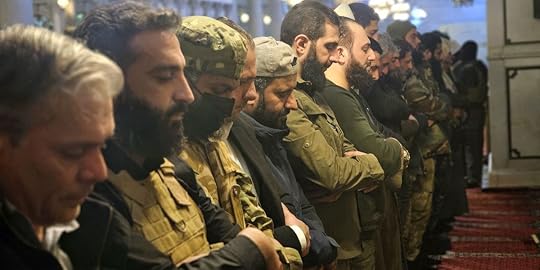 Brandan P. Buck
Brandan P. BuckSome want to suggest what is happening in Syria is cause for celebration. But not everyone is ready to embrace our new, strange bedfellows.
The rapid fall of the oppressive Assad regime after a prolonged civil war has elicited a variety of reactions. One such measured response expresses “hope that the process of power transition be carried out in a manner aligned with the aspirations of the Syrian people, paving [a] path for the establishment of an independent […] government.”
A more jubilant take argues that “the fall of a brutal dictator is rare enough that we should take the opportunity to celebrate it and pay tribute to those who brought it about.”
Indicative of the bizarre parallel motives that this war has created, the Taliban issued the former statement and neoconservative Bill Kristol the latter. Kristol fails to mention that among those “who brought it about” were America’s enemies during the Global War on Terror (GWOT), specifically that the new governing authority of post-Assad Syria is Hayʼat Tahrir al-Sham (HTS), a designated terrorist organization and offshoot of Al-Qaeda.
This irony, however, has not been lost on foreign policy dissidents, most of whom have warned for years that in attempting to oust the Assad regime, the U.S. was making common cause with its enemies from the GWOT. The bifurcated domestic responses to the ouster of the Assad regime and subsequent developments are the latest example of an elite/public divide on U.S. foreign policy and competing visions for America’s role in the world.
The foreign policy class has largely downplayed the moral complexities of the Syrian civil war and has narrativized these latest developments in an ahistorical vacuum. Foreign policy critics, however, and especially veterans, have viewed developments in Syria with skepticism, if not alarm.
Among them was Vice-President-elect (and Iraq War veteran) Senator J.D. Vance, who noted that “[m]any of ‘the rebels’ are a literal offshoot of ISIS. One can hope they’ve moderated. Time will tell.”
This gulf in narrative understanding threatens to undermine further public confidence in American foreign policy and the institutions that implement it.
The crux of official government responses and commentators like Kristol has been to play up the liberatory outcome of Assad’s ouster while downplaying the strange bedfellows and contradictory geopolitics that led to this moment. True to neoconservative form, Kristol ahistorically cast these events as an example of “the arc of the moral universe [bending] toward justice,” a bastardization, of Martin Luther King, Jr.’s civil rights dictum.
Similarly, while Kristol makes no mention of the jihadist elements within the anti-Assad coalition, he internationalizes their efforts and praises “the Ukrainians and Israelis,” who, in his telling, “bent that arc over the last couple of years.”
Rather than view the new political reality in Syria as one fraught with dangers to be kept at arm’s length, Kristol asserts that “we have national interests at stake in Syria.” Among them, Kristol asserts, are “regional interests that would be furthered by having a peaceful, non-terror-friendly government in Syria” and the “further weakening [of] Iran and Hezbollah.”
He does not treat his readers to an argument as to how “regional interests” align with American interests. Instead, Kristol dismisses President-elect Trump’s pledge of noninvolvement as “foolishness.”
In Washington, policymakers from lame-duck President Joe Biden to members of Congress, such as Senator Tim Kaine, have signaled a willingness to work with Syria’s new jihadist government. Senator Kaine said he is “open” to the idea, but efforts have “to be based upon the performance of this group.”ey are nevertheless signaling no desire to remove U.S. troops currently stationed in eastern Syria and, according to Politico, engaged in “a huge scramble to see if, and how, and when [they] can delist HTS.”
Conversely, critics of American foreign policy in the region, as they did consistently throughout the Syrian Civil War, have warned that further involvement in the crisis inherently places the United States in an alliance with its opponents from the GWOT and presents a significant risk of sinking Americans into another quagmire. While think tankers and Washington politicos, detached from the costs of their preferred policies, may be eager to turn the page, thereby shifting their preferred narrative, those who bore the brunt of said policies have longer memories.
The difference in narrative framing is stark, as evidenced by Concerned Veterans for America’s statement on developments in Syria.
Rather than view the ouster of Assad as an event without a recent history, they see the crisis as a potential repeat of the GWOT, asserting that “Americans know too well how regime change can lead to endless wars.” Concerned Veterans for America echoes an earlier consensus among the American people, one that presented little appetite for intervention in the Syrian crisis. They argued that President Biden’s comments on Assad’s downfall indicated that he risked “repeating the mistakes of the past.”
Former CIA analyst and National Security Council chief of Staff Fred Fleitz similarly viewed developments in Syria through the lens of the past and cautioned restraint. Citing HTS’s ideological baggage and the region’s tangled geopolitics, he argued that it was “deeply irresponsible for Biden officials to start meddling in this crisis.”
Outside of the echo chamber of the foreign policy establishment, HTS’s Al-Qaeda pedigree and dependence on foreign jihadists have received greater attention. Marine veteran and public policy advisor for Defense Priorities Dan Caldwell similarly remarked on X that “I find it bizarre (yet revealing) that there are U.S. think-tankers cheering on Al Qaeda-linked Salafists.”
This turnabout reveals that the foreign policy establishment has learned nothing from many failed regime change experiments or has cynically moved on from those old conflicts to focus on a new geopolitical goal. Defeating global jihad is out; defeating Iran’s regional ambitions is in. Their eagerness to pivot to new priorities in alliance with old enemies is the latest example of their detachment from the general public.
Admittedly, this is far from the first time the U.S. has teamed up with odious actors and former adversaries to achieve its foreign policy goals. During the Second World War, the United States fought alongside the Soviet Union, against whom it sent an expeditionary force to depose two decades earlier.
However, such a comparison does not hold water as the United States government was not forced into a partnership with jihadism in Syria by the material realities of geopolitics. The Assad regime, despite its numerous abuses, did not remotely pose a threat to the United States or its security interests. No Assadist armored columns rolled through Western Europe. No Assadist carrier group bombed Pearl Harbor. Regarding U.S. policy toward Syria, no existential American security concern demanded such a Faustian bargain.
If the United States government is to formulate a foreign policy for the future, it must refrain from sweeping under the rug the legacies of foreign policies past. Such is especially the case for America’s recent history in the Middle East, where Americans, who have yet to forget the legacies of the Global War on Terror, are opposed to further entanglements.
Policymakers ought to tread lightly lest they discover that when they attempted to export democracy abroad, they had inadvertently rekindled it at home.
[…]
Report: Turkiye masses troops on Syria border, invasion ‘imminent’
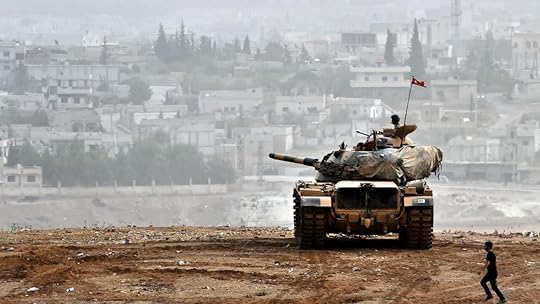 (Photo credit: Aris Messinis, AFP)
(Photo credit: Aris Messinis, AFP)The Cradle
The Turkish-backed Syrian National Army (SNA) announced the start of an operation against the Kurdish-led Syrian Democratic Forces (SDF) in the northern Syrian town of Kobani (Ayn al-Arab) on 17 December.
The announcement came in the midst of a build-up of Turkish troops on the Syrian border in preparation for a possible invasion alongside its proxies in the SNA.
Al Mayadeen’s correspondent stated that “Turkiye wants a security belt 30 kilometers wide on the border with Syria,” stressing that it “is close to achieving its goal.”
The Turkish military has built a concrete barrier between Kobani and the Turkiye border, while Turkish warplanes can be seen flying above the city.
This Post from @theinformant_x has been withheld in New Zealand in response to a legal demand. Learn more
– The Turkish Armed Forces are continuing drone strikes against Kurdish paramilitary forces in northern Syria.
U.S. officials express concern over a military buildup by Turkey near Kobani, indicating a possible large-scale incursion into areas controlled by… pic.twitter.com/DrHfYGYDEI
—
The Informant (@theinformant_x) December 17, 2024
US media has reported that Turkiye is building up its forces along the border in preparation for a possible invasion.
The Wall Street Journal (WSJ) reported that according to one US official, “A Turkish cross-border operation could be imminent,” adding that SNA fighters and Turkish uniformed commandos and artillery in large numbers are now concentrated near Kobani, a Kurdish-majority city in Syria on the northern border with Turkiye.
Turkiye began building up its forces near the border two weeks ago as militants from Hayat Tahrir al-Sham (HTS), a UN-designated terror group, toppled the government of Syrian president Bashar al-Assad and occupied the capital, Damascus.
Kurdish forces under the People’s Protection Units (YPG) began taking control of Kurdish-majority areas in Syria in 2012, with the outbreak of war in 2011.
Turkiye has sought to prevent Kurds from forming contiguous regions in areas of Syria on its southern border, stretching from Afrin in the northwest to Kobani in the north center and to Hasaka in the northeast.
Turkiye first supported ISIS and then sent its own forces to invade northern Syria multiple times to prevent such a Kurdish region from being established.
The US military partnered with the YPG to create the Syrian Democratic Forces (SDF) in 2015. The US and SDF occupied land outside of traditional Kurdish control, including Sunni Arab areas containing Syria’s oil fields and wheat-producing regions.
The US has been trying to keep Syria partitioned, under sanctions, and unable to rebuild since the war ended in 2019.
Kurdish official Ilham Ahmed urged President-elect Donald Trump to prevent a new Turkish invasion.
Turkiye’s goal is to “establish de facto control over [Kurdish] land before [Donald Trump] take[s] office, forcing [the US] to engage with them as rulers of [Kurdish] territory,” Ahmed wrote to Trump in a letter viewed by the WSJ. “If Turkey proceeds with its invasion, the consequences will be catastrophic.”
A spokesman for Turkiye’s embassy in Washington did not immediately respond to the WSJ’s requests for comment.
[…]
Via https://thecradle.co/articles/turkiye-masses-troops-on-syria-border-invasion-imminent-report
On Ukraine war, will Trump channel JFK or LBJ?
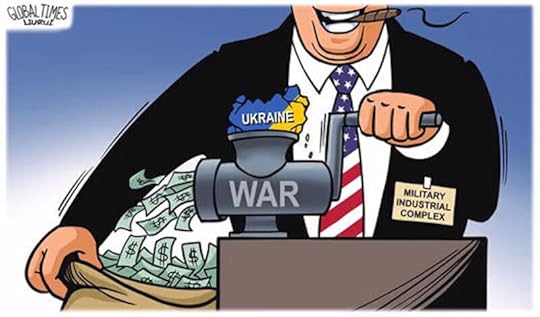 Walt Zlotow
Walt ZlotowDonald Trump will inherit Joe Biden’s proxy war against Russia in Ukraine on January 20.
Biden has made clear he’ll never negotiate an end to his failed war that includes any concession whatsoever to Russian security interests. Biden is furnishing Ukraine with billions more in weaponry to prevent a Ukraine collapse on his watch. He’ll be damned if he allows a US defeat in Ukraine in his last year to bookend his accepting a US defeat in Afghanistan in his first year.
That presents a huge dilemma for Trump whose who routinely called for a quick end to this senseless war during his successful campaign.
But just like in his first term, Trump may be trumped on negotiating peace and disengagement by the US war party. Trump achieved nothing in terms of détente with North Korea, China, Iran, Russia or cutting America’s bloated 34,000 troop presence in NATO Germany. He may also fall victim to the same dread Biden has of being president when Ukraine does sue for peace, losing four provinces, committing to neutrality between East and West, including no NATO membership as the basis for a ceasefire.
Trump’s situation recalls the dilemma both JFK and LBJ faced over US involvement in America’s lost war in Vietnam 611 years ago.
JFK inherited his predecessor Ike’s 700 ‘advisors’ and Vietnam and ironclad US commitment to keep South Vietnam free from communism. By the end of 1962 Kennedy hiked the advisors to 11,000, incurring over 50 deaths in their non-combat role.
But by spring of 1963 JFK, more a realist than fanatical Cold Warrior, understood that no US presence could save South Vietnam from defeat. He began to secretly plan for a full US withdrawal. In May, 1963 he had Defense Secretary Bob McNamara draw up a withdrawal plan. Kennedy made this plan official policy with his National Security Action Memorandum 263, dated October 11, 1963. It called for withdrawal of 1,000 advisors by December and rest of the now 16,000 personnel out by the end of 1965. The 2 year gap to complete the US pullout was due to waiting till after his reelection to avoid political pushback from Republicans that could jeopardize his reelection.
This was US policy on the day JFK died. Had Kennedy lived there is no basis for believing he would not follow through on his pledge to end US military involvement in Vietnam.
When Lyndon Johnson became president, he immediately cancelled National Security Action Memorandum 263. His administration, Congress, the military and compliant national media all rallied around the fiction of complete continuity between JFK and LBJ on Vietnam. Johnson began pouring in more advisors before pivoting to direct US warfare after he hyped the August, 1964 Gulf of Tonkin incident to militarize US action against North Vietnam. LBJ famously remarked ‘I’m not going to be the first US president to lose war’.
In so doing Johnson destroyed his presidency and his legacy, along with over 58,000 soldiers killed, 150,000 inured, of which 21,000 were permanently disabled.
That is the dilemma Trump most likely is grappling with today. Will he follow thru with his campaign pledge to end America’s proxy war with Russia without total victory for our Ukraine proxies? Or will Trump succumb to the tragic Lyndon Johnson syndrome of continuing to pour hundreds of billions in US treasure, if not US lives, into a lost cause America should never have provoked.
Based upon Trump’s sorrowful record of caving to the war party in his first term, the latter course is the safer bet. But we should all work to push President Trump on Ukraine to channel JFK, not LBJ.
[…]
Via https://nuclear-news.net/2024/12/19/1-b1-on-ukraine-war-will-trump-channel-jfk-or-lbj/
Privatizing Syria: US Plans to Sell Off Nation’s Wealth After Assad
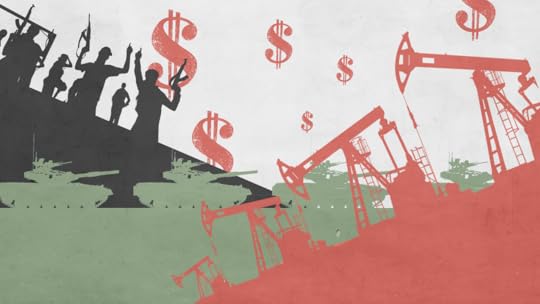
Kit Klarenberg
In the immediate wake of the Syrian government’s abrupt collapse, much remains uncertain about the country’s future – including whether it can survive as a unitary state or will splinter into smaller states as did Yugoslavia in the early 1990s, a move that ultimately led to a bloody NATO intervention. Moreover, who or what may take power in Damascus remains an open question. For the time being at least, members of ultra-extremist Hayat Tahrir al-Sham (HTS) appear highly likely to take key positions in whatever administrative structure sprouts from Bashar Assad’s ouster after a decade-and-a-half of grinding Western-sponsored regime change efforts.
As Reuters reported on December 12, HTS is already “stamping its authority on Syria’s state with the same lightning speed that it seized the country, deploying police, installing an interim government and meeting foreign envoys.” Meanwhile, its bureaucrats – “who until last week were running an Islamist administration in a remote corner of Syria’s northwest” – have moved en masse “into government headquarters in Damascus.” Mohammed Bashir, head of HTS’ “regional government” in extremist-occupied Idlib, has been appointed the country’s “caretaker prime minister.”
However, despite the chaos and precariousness of post-Assad Syria, one thing seems assured – the country will be broken open to Western economic exploitation, at long last.
Multiple reports show that HTS has informed local and international business leaders that when in office, it will “adopt a free-market model and integrate the country into the global economy, in a major shift from decades of corrupt state control.”
As Alexander McKay of the Marx Engels Lenin Institute tells MintPress News, state-controlled parts of Syria’s economy may have been under Assad, but corrupt it wasn’t. He believes a striking feature of the ongoing attacks on Syrian infrastructure from forces within and without the country is that economic and industrial sites are a recurrent target. Moreover, the would-be HTS-dominated government has done nothing to counter these broadsides when “securing key economic assets will be vital to societal reconstruction, and therefore a matter of priority”:
‘Reconstruction Project’We can see clearly what kind of country these ‘moderate rebels’ plan to build. Forces like HTS are allied with U.S. imperialism, and their economic approach will reflect this. Prior to the proxy war, the government pursued an economic approach that mixed public ownership and market elements. State intervention enabled a degree of political independence [that] other nations in the region lack. Assad’s administration understood without an industrial base, being sovereign is impossible. The new ‘free market’ approach will see all of that utterly decimated.”
Syria’s economic independence and strength under Assad’s rule and the benefits reaped by average citizens, as a result, were never acknowledged in the mainstream before or during the decade-long proxy war. Yet, countless reports from major international institutions underline this reality – which has now been brutally vanquished, never to return. For example, an April 2015 World Health Organization document noted how Damascus “had one of the best-developed healthcare systems in the Arab world.”
Per a 2018 U.N. investigation, “universal, free healthcare” was extended to all Syrian citizens, who “enjoyed some of the highest levels of care in the region.” Education was likewise free, and before the conflict, “an estimated 97% of primary school-aged Syrian children were attending class, and Syria’s literacy rates were thought to be at over 90% for both men and women [emphasis added].” By 2016, millions were out of school.
A U.N. Human Rights Council report two years later noted pre-war Syria “was the only country in the Middle East region to be self-sufficient in food production,” its “thriving agricultural sector” contributing “about 21%” to GDP 2006 – 2011. Civilians’ daily caloric intake “was on par with many Western countries,” with prices kept affordable via state subsidy. Meanwhile, the country’s economy was “one of the best performing in the region, with a growth rate averaging 4.6%” annually.
At the time that report was written, Damascus had been reduced to heavy reliance on imports by Western sanctions in many sectors and, even then, was barely able to buy or sell much in the way of anything, as the measures amounted to an effective embargo. Simultaneously, the U.S. military occupation of a resource-rich third of Syria cut off the government’s access to its own oil reserves and wheat. The situation would only worsen with the Caesar Syria Civilian Protection Act’s passing in June 2020.
Under its auspices, a vast volume of goods and services in every conceivable field were and today remain banned from being sold to or traded with any Syrian citizen or entity. The legislation’s terms explicitly state preventing attempts to rebuild Syria was its chief objective. One passage openly outlines “a strategy to deter foreign persons from entering into contracts related to reconstruction.”
Immediately after coming into effect, the Syrian pound’s value collapsed further, sending living costs skyrocketing. In a blink, almost the entire country’s population was left barely able to afford even the bare essentials. Even mainstream sources typically approving of belligerence towards Damascus cautioned of an inevitably impending humanitarian crisis. However, Washington was neither concerned nor deterred by such warnings. James Jeffrey, State Department chief of Syria policy, actively cheered these developments.
Simultaneously, as Jeffrey subsequently admitted to PBS, the U.S. was engaged in frequent, secret communication with HTS and actively assisting the group – albeit “indirectly” due to the faction’s designation as a terrorist entity by the State Department. This followed direct approaches to Washington by its leaders, including Abu Mohammed Jolani, former leader of Al Qaeda affiliate al-Nusra. “We want to be your friend. We’re not terrorists. We’re just fighting Assad,” HTS reportedly said.
Given this contact, it may be no coincidence that in July 2022, Jolani issued a series of communications about HTS’ plans for future Syria, containing multiple passages in which finance and industry loomed large. Directly foreshadowing the group’s recent pledge to “adopt a free-market model,” the extremist mass murderer discussed his desire to “open up local markets to the global economy.” Many passages read as if they were authored by representatives of the International Monetary Fund.
Coincidentally, Syria, since 1984, has refused IMF loans, a key tool by which the U.S. Empire maintains the global capitalist system and dominates the Global South, ensuring ‘poor’ countries remain under its heel. The World Trade Organization, of which Damascus isn’t a member either, plays a similar role. Accession to both would go some way to cementing the “free-market model” advocated by HTS. After over a decade of deliberate, systematic economic ruin, geopolitical risk analyst Firas Modad tells MintPress News:
‘Shock Therapy’They have no choice. They need Turkish and Qatari backing, so [they] will need to liberalize. They have no capital whatsoever. The country is in ruins and they desperately need investment. Plus, they hope liberalizing may attract some Saudi, Emirati or Egyptian interest. It’s impossible for Syria to rebuild using its own resources. The civil war might resume. They are acting out of necessity.”
In Syria’s protracted political and economic dismantling, there are eerie echoes of the U.S. Empire’s destruction of Yugoslavia throughout the 1990s. During that decade, the multiethnic socialist federation’s breakup produced bitter wars of independence in Bosnia, Croatia and Slovenia – encouraged, financed, armed, and prolonged every step by Western powers. Belgrade’s perceived centrality to these brutal conflicts and purported complicity in and sponsorship of horrendous war crimes led the U.N. Security Council to impose sanctions against what remained of the country in May 1992.
The measures were the harshest ever levied in U.N. history. At one point, producing inflation of 5.578 quintillion percent, drug abuse, alcoholism, preventable deaths and suicides skyrocketed, while shortages of goods – including water – were perpetual. Yugoslavia’s once thriving independent industry was crippled, its ability to manufacture even everyday medicines virtually non-existent. By February 1993, the CIA assessed that the average citizen had “become accustomed to periodical shortages, long lines in stores, cold homes in the winter and restrictions on electricity.”
Surveying the wreckage years later, Foreign Affairs noted that sanctions against Yugoslavia demonstrated how “in a matter of months or years whole economies can be devastated,” and such measures can serve as uniquely lethal “weapons of mass destruction” against civilian populations of target countries. Yet, despite such desolation and misery, throughout this period, Belgrade remained resistant to privatization and foreign ownership of its industry or to the pillaging of its vast resources. The overwhelming majority of Yugoslavia’s economy was state- or worker-owned.
Yugoslavia was not a member of the IMF, World Bank, or WTO, which went some way to insulate the country from economic predation. In 1998, though, authorities began waging a heavy-handed counterinsurgency against the Kosovo Liberation Army, a CIA and MI6-funded and armed al-Qaeda-linked extremist militia. This provided the U.S. Empire with a pretext to, at last, finish the job of neutralizing what remained of the country’s socialist system.
[…]
From March – June 1999, the military alliance bombed Yugoslavia for 78 straight days. Yet, Belgrade’s army was barely in the firing line at any stage. In all, officially, just 14 Yugoslav tanks were destroyed by NATO, but 372 separate industrial facilities got smashed to smithereens, leaving hundreds of thousands jobless. Markedly, the alliance took guidance from U.S. corporations on which sites to target, and not a single foreign- or privately-owned factory was hit.
NATO’s bombing laid the foundations for Yugoslav leader Slobodan Milosevic’s removal via a C.I.A.- and National Endowment for Democracy-sponsored color revolution in October of the following year. In his place, a doggedly pro-Western government advised by a collective of U.S.-sponsored economists took power. Their explicit mission was to “make an economic environment favorable for private and other investments” in Belgrade. Ravaging “shock therapy” measures were deployed the moment they assumed office, to the further detriment of an already immiserated and impoverished population.
In the decades since successive Western-backed governments across the former Yugoslavia have enforced an endless array of neoliberal “reforms” to ensure an “investor-friendly” environment locally for wealthy Western oligarchs and corporations. In lockstep, low wages and a lack of employment opportunities stubbornly endure or worsen while living costs rise, producing mass depopulation, among other destructive effects. All along, U.S. officials intimately implicated in the country’s breakup have brazenly sought to enrich themselves from the privatization of former state industries.
‘Internal Repression’Does such a fate await Damascus? For Pawel Wargan, Political Coordinator at the Progressive International, the answer is a resounding “yes.” He believes the country’s story is familiar “to those who study the mechanisms of imperialist expansion.” Once its defenses are fully neutralized, he foresees the country’s industries being “bought-up at bargain sale prices as part of market ‘reforms,’ which transfer yet another chunk of humanity’s wealth to Western corporations”:
We’ve witnessed the well-rehearsed choreography of imperialist regime change: a ‘tyrant’ is overthrown; backers of national sovereignty are systematically and viciously repressed; with tremendous, but hidden, violence, the country’s assets are chopped and diced and sold to the lowest bidder; labor protections are discarded; human lives are cut short. The most predatory forms of capitalism take root in every crevice and pore that emerges in the collapse of the state. This is the agenda of structural adjustment policies enforced by the World Bank and IMF.”
Alexander McKay echoes Wargan’s analysis. Now “free,” Syria will be forcedly made “dependent upon imports from the West” evermore. This not only fattens the Empire’s bottom line but “also severely restricts the freedom of any Syrian government to act with any degree of independence.” He notes similar efforts have been undertaken throughout the post-1989 era of U.S. unipolarity. It was well underway in Russia during the 1990s “until the slow turn around in policy started in the early 2000s under Putin”:
The aim is to reduce Syria to the same status as Lebanon, with an economy controlled by imperial forces, an army used primarily for internal repression, and an economy no longer able to produce anything but merely serve as a market for commodities produced elsewhere, and site of resource extraction. The U.S. and its allies do not want independent development of any nation’s economy. We must hope the Syrian people can resist this latest act of neo-colonialism.”
[…]
The Most Revolutionary Act
- Stuart Jeanne Bramhall's profile
- 11 followers







